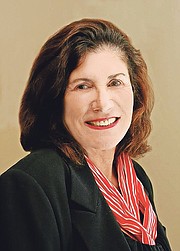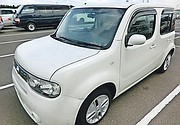By DIANE PHILLIPS
Let me state this up front. I am not a psychologist and I have absolutely no training in the psyche of anything. Sometimes I don’t even understand why my dog barks at nothing, or nothing that we can see or hear. Just stating all that up front so you don’t have any expectations that what I am about to discuss has any scientific basis whatsoever and is based solely on serious conjecture.
The violence that erupted last weekend in America when individual shooters unleashed their hatred in volleys of bullets, killing randomly as innocent people went about their business, shopping for back to school supplies at a Walmart in El Paso, Texas, or waiting to get into a night spot in Dayton, Ohio, shook everyone who watched. The two incidents that resulted in 31 deaths with dozens more rushed to hospitals pushed the number of domestic terrorist attacks to over 250 in the last year, accounting for more civilians dying in a free America than American soldiers in Afghanistan in 2017 and 2018 combined.
Media focused on who the killers were, how they got their guns, asking why there isn’t a demand to stop the bloodshed. All important questions the media should ask. The answer, in part, is the insanely easy availability of weapons designed for one purpose only - to kill people. Automatic weapons like AK47s are not used for hunting for food or self-defence against a bear in the wild charging at a child. They are meant to kill men, women and children like those doing nothing more than responsibly searching for notebooks, tablets and backpacks.
How does America, which considers itself the leader of the free world, continue to allow the flow of such weapons as easy to come by at a gun show as a cheeseburger? The fathers of the Constitution who included “the right to bear arms” could not gaze into the future to see what havoc they inadvertently wrought. If they knew, I suspect they would be pounding on the grass above, begging to be released from below to reconvene and re-write.
Combine that ease of access to high-powered weapons in an environment of hatred and distrust stirred up by US President Donald Trump. And while I am certainly not a member of the Trump fan club, I think blaming a man who has shown total disdain for the underprivileged, the foreign, even going so far as chanting “Send her home” - referring to a democratically elected US Congresswoman of Moslem faith - stops short of understanding the real underlying cause. What Trump may be contributing to the anger does not affect the masses, after all. Many are angry, but they don’t pick up guns or post hate-filled rhetoric on social media. They may fume silently or among friends, but they do not become domestic terrorists.
So in an environment conducive to distrust and mistrust, to expelling those who are different, or looking suspiciously instead of with compassion for those whose survival is endangered, what causes one person to cross the line when tens of thousands of others do not. What causes the abhorrent behaviour?
Why did one Parkland, El Paso or Dayton shooter do it and not thousands of others when the hatred was spewed evenly across platforms?
Think of the movie The Shape of Water. If you haven’t seen it, you missed one of the best movies ever made. The 2017 film, the most unlikely story of a love affair between a mute woman and a fish-like god from South America caged by Americans bent on understanding his unearthly powers, won Oscars for Best Picture and Best Director. If the attraction between the two bordered on fantasy bizarre, the underlying forces were undeniable. Both were marginalised characters. Their marginalisation led to behaviour that would have been totally out of character for more ordinary counterparts. “When he looks at me, he does not know I am incomplete,” mouths actress Sally Hawkins, playing the mute cleaning lady in the lab whose fascination with the caged “monster” deepens until she does the unthinkable, crashing the cage, flooding the tightly secured lab, freeing the trapped man-animal-god-creature inside.
In their case, because it ended in a union between two otherwise displaced souls, audiences laughed and cried and critics applauded. But imagine ordinary marginalised characters enduring lives of frustration, girded by ugly talk, inciting greater anger against the unnamed enemy causing it all and discovering a simple route out, destruction of the enemy. Maybe it would take on the action of The Shape of El Paso.
Marginalisation and easy access to a way out of it account for more tragedy than we recognise.
Should the Cube be the National Car of Bahamas?
One day we will all be driving electric cars and my hat, were I to wear one, would go off to Pia Farmer and the crew at Easy Car Sales on Carmichael Road for their pioneering spirit in bringing in electric cars. Meantime, it seems the aptly-named Cube is becoming the national car of The Bahamas and I’d love to see the numbers on how many are sold and how long the average owner maintains each one. Any answers please reply to diane@dpa-media.com.
And finally . . .
Sign of the week: Heading west on the Western Road, it’s hard not to chuckle at the sign, SLOW SECURITY GUARD. Too bad, maybe next time they can find a guard faster afoot.






Comments
Use the comment form below to begin a discussion about this content.
Sign in to comment
Or login with:
OpenID